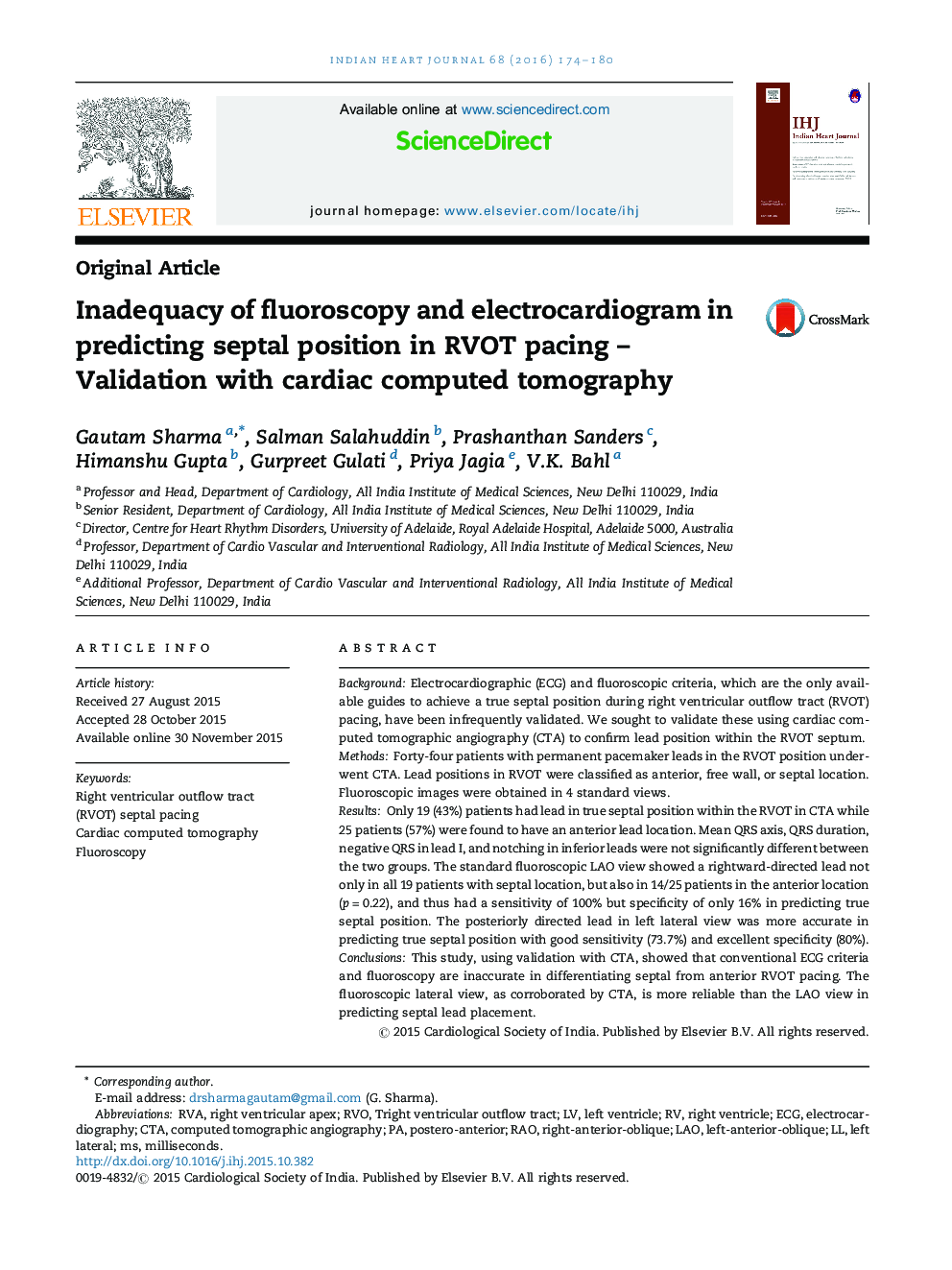| Article ID | Journal | Published Year | Pages | File Type |
|---|---|---|---|---|
| 2927350 | Indian Heart Journal | 2016 | 7 Pages |
BackgroundElectrocardiographic (ECG) and fluoroscopic criteria, which are the only available guides to achieve a true septal position during right ventricular outflow tract (RVOT) pacing, have been infrequently validated. We sought to validate these using cardiac computed tomographic angiography (CTA) to confirm lead position within the RVOT septum.MethodsForty-four patients with permanent pacemaker leads in the RVOT position underwent CTA. Lead positions in RVOT were classified as anterior, free wall, or septal location. Fluoroscopic images were obtained in 4 standard views.ResultsOnly 19 (43%) patients had lead in true septal position within the RVOT in CTA while 25 patients (57%) were found to have an anterior lead location. Mean QRS axis, QRS duration, negative QRS in lead I, and notching in inferior leads were not significantly different between the two groups. The standard fluoroscopic LAO view showed a rightward-directed lead not only in all 19 patients with septal location, but also in 14/25 patients in the anterior location (p = 0.22), and thus had a sensitivity of 100% but specificity of only 16% in predicting true septal position. The posteriorly directed lead in left lateral view was more accurate in predicting true septal position with good sensitivity (73.7%) and excellent specificity (80%).ConclusionsThis study, using validation with CTA, showed that conventional ECG criteria and fluoroscopy are inaccurate in differentiating septal from anterior RVOT pacing. The fluoroscopic lateral view, as corroborated by CTA, is more reliable than the LAO view in predicting septal lead placement.
